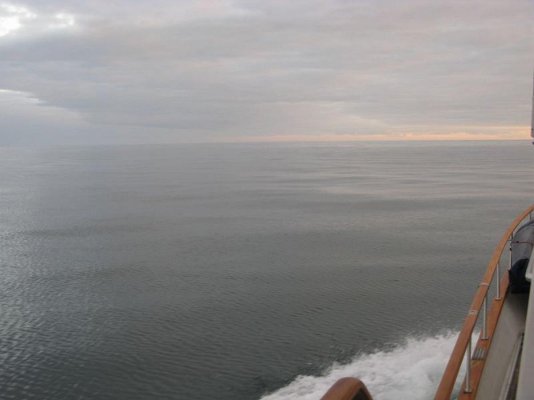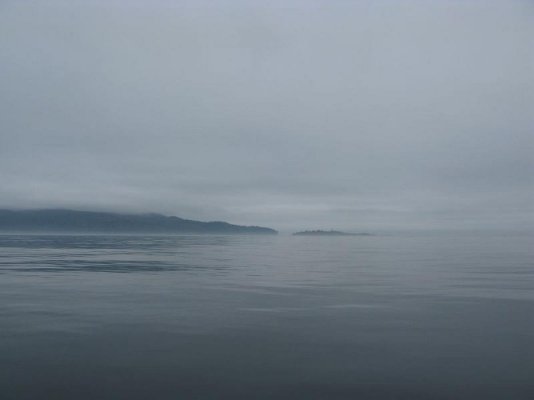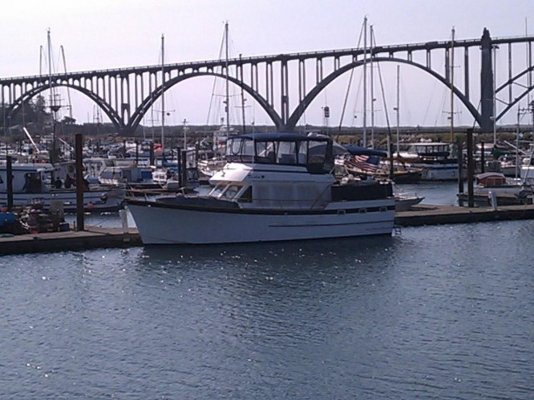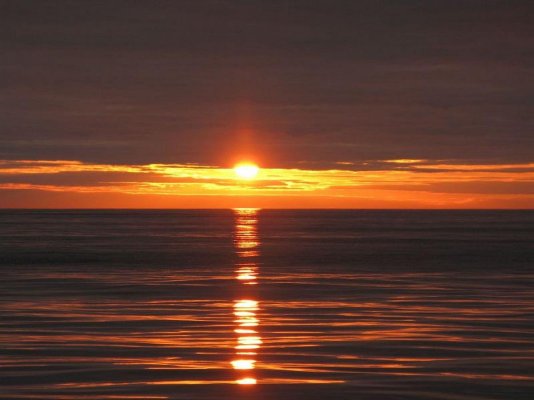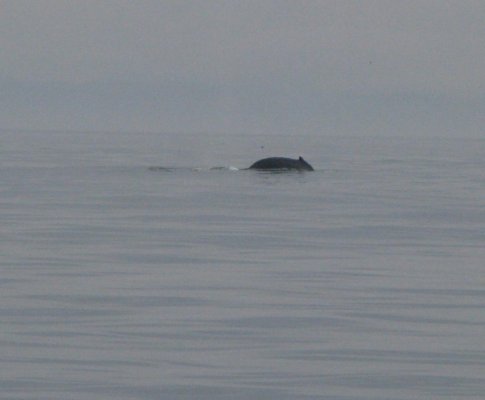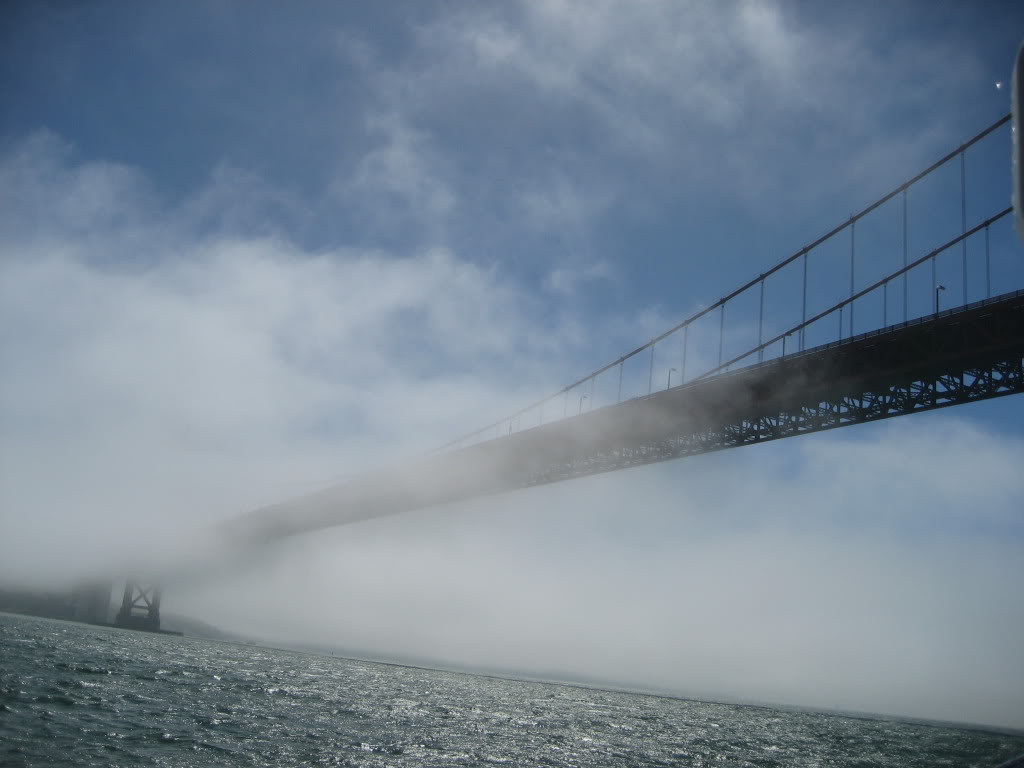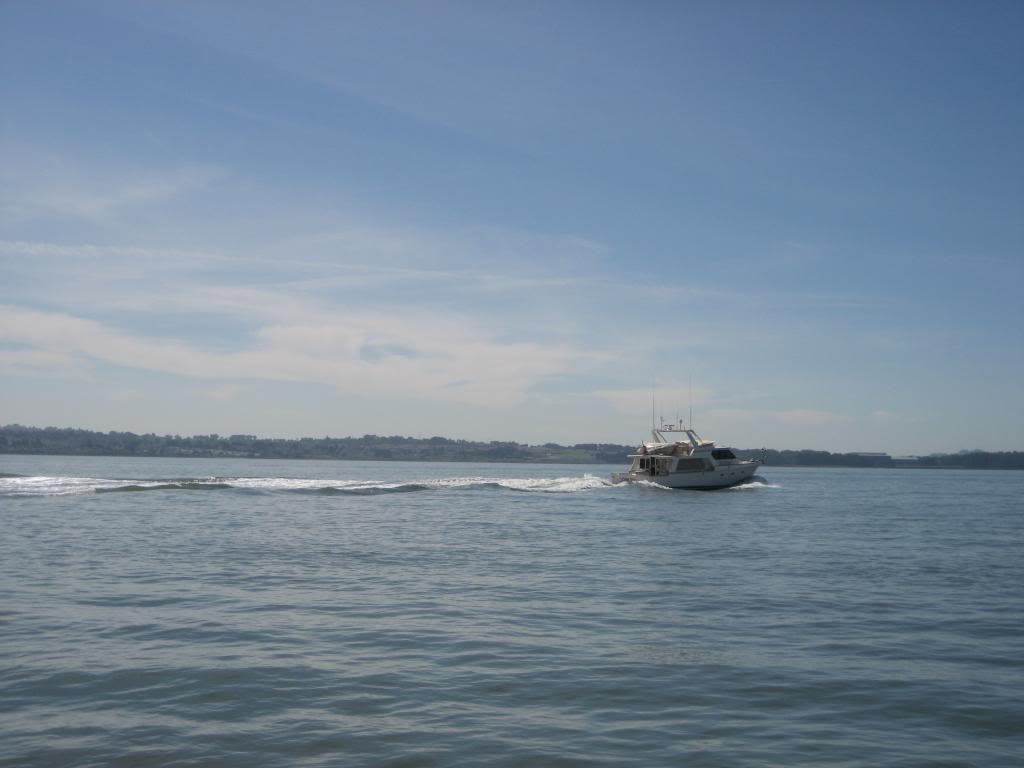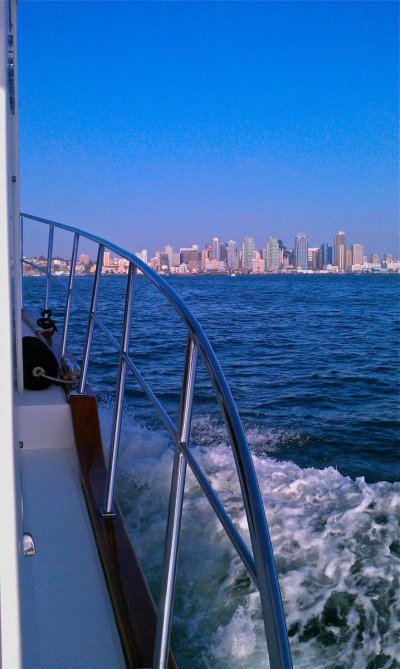Tell us about running at night. I can see how you might to start imagining seeing things, or miss seeing that whale. We do have a 48 mile open array radar with a color display and it is pretty good about picking out the small stuff. One comment I have heard is that in the open Pacific (or any ocean), the loneliest you will ever feel will be a 3am on a moonless night in a pitching sea. Valid?
Actually, running the boat at night isn’t that bad. Assuming you’ve been travelling all day and into the evening, you already know what the sea conditions are. Unless there is a front moving in overnight you would most likely (not necessarily though) encounter the same conditions that night. If conditions were marginal during the day, you should already be in port by dark.
As evening sets in, you should already have your radar on (if there is fog you will have your radar on all the time) and your eyes should be getting accustomed to the fading light. By nightfall you should be comfortable with your surroundings, as even on a moonless night it seems that you can still make out the water immediately around you. It does seem that the seas lay down flatter in fog, which kinda compensates for not being able to see much of anything.
We stood four hour watches and the off watch person would sleep on the couch in the main cabin with our clothes on so if needed we could be up on the bridge pretty quickly. We did all our driving from the flybridge so if we needed to call the off watch person we would sound a loud buzzer down below. Fortunately, we never had to do that.
It is important that the off watch person gets as much sleep as possible because it does get tiring standing watch in the wee hours.
On my watch I always had some good music to listen to. The other crew person had a book on CD he listened to. I don’t know about the lonely thing at 3am, but you sure do get an opportunity for some major introspection.
I set the alarms on the autopilot, depth sounder, and radar and had the VHF scanning 16, 13, 68, and WX alert (we had another radio on NOAA all the time). I would then drape all the instruments except the radar screen. I was able to maintain my night vision better that way. I would check our position on the plotter occasionally, but I focused mainly on the radar screen.
I have to admit that sometimes I did find myself doing the head-bob thing and sometimes it was a struggle not to doze off. Usually I would get up and walk around the bridge for a while and maybe even drop down to the open sundeck for a minute. I was still able to keep a look out while doing this and I found that I was somewhat refreshed when I sat back down in the chair. I don’t recall being so tired that at any time I felt I was jeopardizing our safety. If I did I would have called the other crew up and gone to a two hour watch (like a dog-watch) which we had agreed we would do before doing the night run. If you have more than a two person crew, things become much easier.
As I said though, overall it wasn’t that bad. However, you really do have to trust your radar. It’s probably ok to sleep for a couple of hours when you are pretty far out on the ocean, but we were in an area where there were fishing boats out all night and larger vessels transiting the shipping lanes. AIS can help you with the big boys, but most of the smaller vessels are not equipped with transponders.
Fortunately, the sleeping whale encounter was during the day. I tooted the horn several times but he didn’t move until after I went around him, then he just quietly sounded. I doubt I would have seen him or had enough time to avoid him if it had been at night.
If you have lots of time though, you really don’t need to think about doing night runs, just go port to port on day runs. We did them simply because we wanted to take advantage of the favorable conditions which stayed pretty good for about a week after we reached LA. After that a major system moved down from the Gulf of Alaska and basically shut down the whole west coast for a while. It’s all a matter of timing (and a healthy dose of good luck).
On the nights that were clear it seemed like there were a million stars out and the air was clean and fresh. However, it did feel great to see those first hints of daylight coming up over the coastal range.
I’m sure other folks out there have different methods for doing night runs that work better than ours and different experiences. Perhaps they will share them also.
I’ve included some pics just to give you an idea of the conditions we encountered.
Fair Winds. KJ

